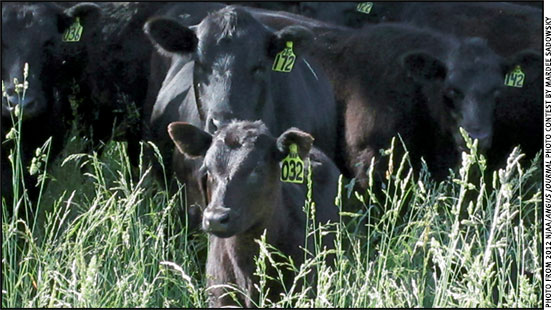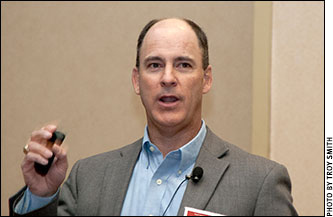
Profitable Cow Herds
King Ranch Institute director gives economic considerations for profitable cow herds.
“Most people don’t get into the cattle business because they have a passion for accounting, but it is still needed,” observed Clay Mathis, director and endowed chair of the King Ranch Institute for Ranch Management. He addressed the 2014 Beef Improvement Federation (BIF) Annual Meeting and Research Symposium in Lincoln, Neb., June 19.

Clay Mathis suggested implementing a managerial accounting system, which provides financial and statistical information required to make day-to-day decisions.
All managers need a clear view of the operation’s financial position, and excellent managers make strategic changes that have long-standing systematic benefit to the operation, he said.
He noted that revenue increases with heavier calves and improved reproduction performance. Expenses have increased across the board during the past 10 years, but he emphasized the “Big Three” — labor, depreciation and feed.
“All decisions should be conscious of how it will affect these three costs. The most profitable operations work hard to minimize depreciation,” he suggested.
Putting revenue and costs together is the key point. He emphasized that profit-minded managers should seek practical, high-leverage interventions to the production system. They focus on optimizing weaning rate, weaning weight, feed, labor and depreciation.
To do so, managers must pay attention to financial information, even though it is not the “fun part.” Mathis suggested implementing a managerial accounting system, which provides financial and statistical information required to make day-to-day decisions.
Drought has been a big issue for financial viability, he noted. When cows left the Southwest starting in 2011, the financial denominator changed, he explained. There were fewer cows, but the same fixed costs remained. Revenue was stretched tighter.
He reiterated that good managers make many small decisions to keep costs low relative to the value of the weaned calves they produce. Excellent managers take that a step further. They do the same, but they also understand and find leverage in the production system.
He recommended taking a look at many options that could impact your production system. These include purchasing bred replacement females instead of raising your own, contracting hay production/farming tasks, or implementing a crossbreeding system. These are not blanket recommendations, he said; however, they can provide ideas of options to consider.
“Listen for information that may lead to high-leverage improvement in your operation,” he concluded.
The 2014 BIF Annual Meeting & Research Symposium was hosted by the University of Nebraska–Lincoln, the U.S. Meat Animal Research Center and the Nebraska Cattlemen June 18-21 in Lincoln, Neb. The Angus Journal and LiveAuctions.tv provide comprehensive online coverage of the event at www.BIFconference.com. Visit the Newsroom for summaries, proceedings, PowerPoints and audio of the sessions; and the Awards page for announcements of award winners.






